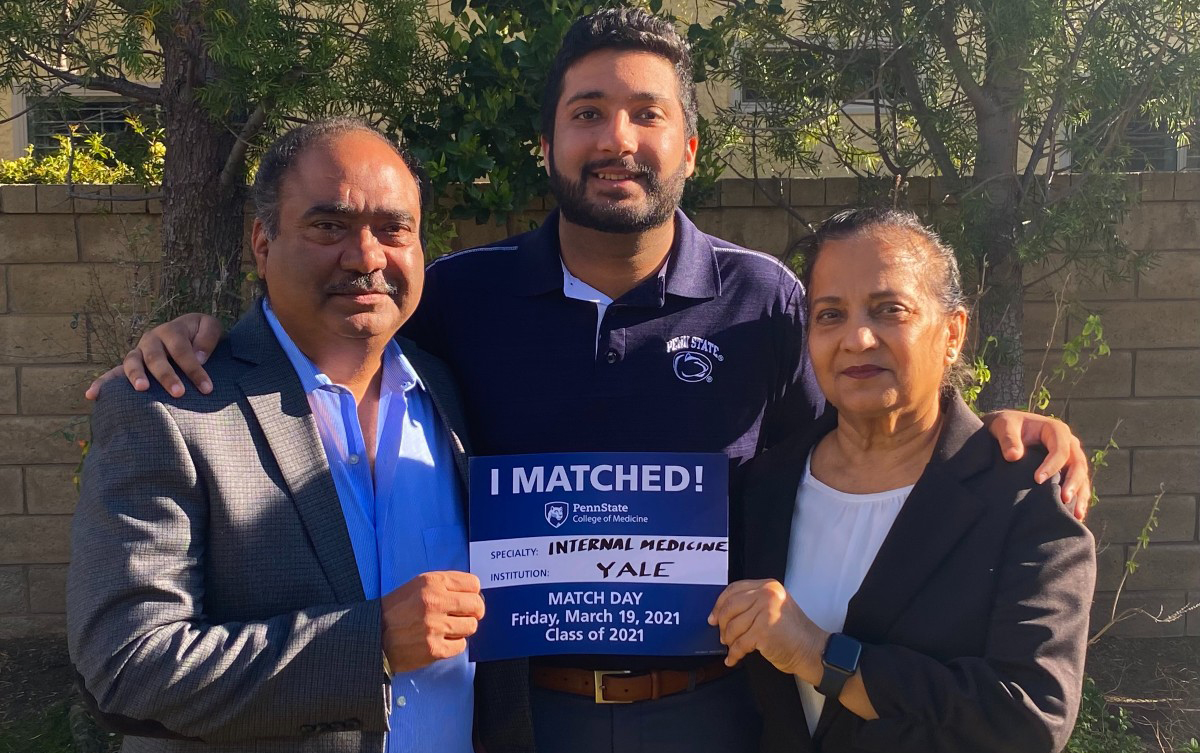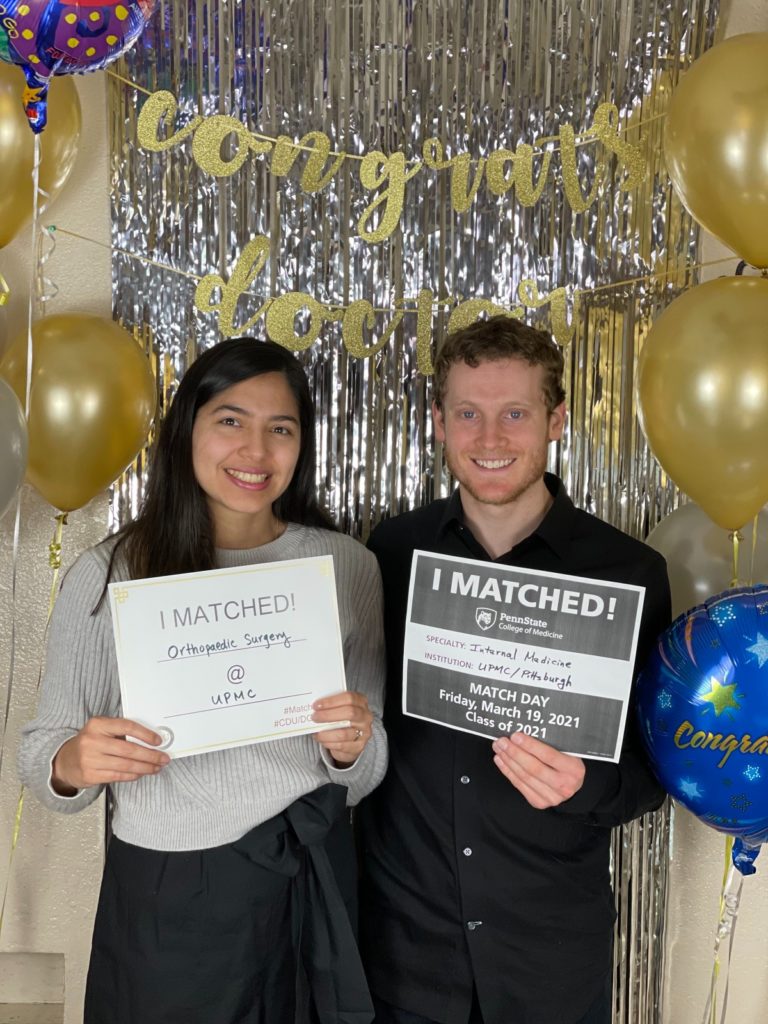The masked match: finding a future in medicine in the midst of a pandemic

Fourth-year medical student Nate Tolman remembers when the reality of the COVID-19 pandemic first set in. He was spending time with his fiancée, Brenda Iglesias, in Los Angeles in early March 2020 for what was supposed to be a short vacation before they both began their final year of medical school.
The two-week vacation turned into months of virtual learning from Penn State College of Medicine faculty on the other side of the country. Even though the pandemic tried to sideline them, Tolman and his classmates found a way to contribute to Penn State Health’s COVID-19 response.
Tolman led a team of medical students who in the early months of the pandemic helped doctors at Penn State Health Milton S. Hershey Medical Center prepare COVID positive patients for discharge from the hospital. They called patients’ emergency contacts to determine if each could successfully isolate until recovery and had access to grocery and medication delivery. He also led a task force of students who scribed for physicians on the COVID units at Hershey Medical Center during the recent winter surge.
Tolman’s passion for connecting with patients and his interest in social determinants of health made specializing in internal medicine a natural choice for him. Although he had his mind made up before COVID-19, he said the pandemic has reinforced why there’s a need for compassionate caregivers focused on improving health care delivery systems.
“While coordinating COVID patient discharges, I witnessed in real time how a patient’s health care extends beyond the walls of the hospital,” Tolman said. “As an internal medicine physician, I will do my part to ensure that patients have the resources necessary to navigate complex health care systems so they can live healthy lives.”

Fourth-year medical student, Nate Tolman, right, celebrates Match Day at home with his fiancée, Brenda Iglesias.
Match after mayhem
Tolman and his fiancée were among thousands of medical students around the country who found out where they will complete the next stage of their training during Match Day on March 19. Getting to that moment wasn’t easy.
“The interview season was strange for us,” Tolman recalled. “We had great conversations with residents and program directors through virtual platforms, but it was difficult to picture ourselves living in a location that we’ve never visited in person and being unable to see the hospitals we’d be training at.”
Tolman also had the added stress of doing a “couples match”, where medical student couples attempt to join residencies that are geographically close together. Both will do their residency training at University of Pittsburgh Medical Center — Tolman for internal medicine and Iglesias for orthopaedic surgery.
Among the matched College of Medicine students, 20% will stay at Penn State Health for residency, 34% will stay in Pennsylvania and the rest will head off to 27 other states and the District of Columbia. The first class of students from the College of Medicine’s University Park Curriculum Track, which they designed together alongside faculty, all matched into residency programs.
Four will train with military medical programs. Nearly a third will enter a field of primary care that includes family medicine, internal medicine, pediatrics and dual training in medicine and pediatrics.
Lessons in perseverance
Despite the challenges this year’s class faced as a result of the pandemic, many were moved by their faculty mentors at the College of Medicine. Arshjot Khokhar, who matched to the internal medicine residency program at Yale New Haven Hospital in New Haven, Connecticut, admired the example set by Dr. Ami DeWaters, assistant professor of medicine, and other faculty members.
“For the past year, Dr. DeWaters was a front-line worker taking care of COVID patients,” Khokhar said. “I was inspired by how she continued teaching and mentoring while also treating and advocating for vulnerable, critically ill patients.”
Khokhar also served in the College of Medicine’s pandemic response. He led a group of students who collaborated with Penn State Health’s government relations team to inform and develop policy briefings on topics ranging from telemedicine to opening up closed testing centers for medical students to take their licensing exams.
Contributing to the pandemic response efforts alongside mentors who continued to teach and take care of patients in the midst of the greatest health crisis of the century solidified Khokhar’s decision to go into internal medicine, he said.
“During a pivotal time in history full of sociopolitical issues and the greatest health crisis the world has faced in a century, my classmates – the future of medicine – stepped up to serve,” Khokhar said. “I’m proud of the whole student body at the College of Medicine. It’s reassuring to know these people will be out in the world with me pushing for equity and better health for patients.”
If you're having trouble accessing this content, or would like it in another format, please email Penn State Health Marketing & Communications.
